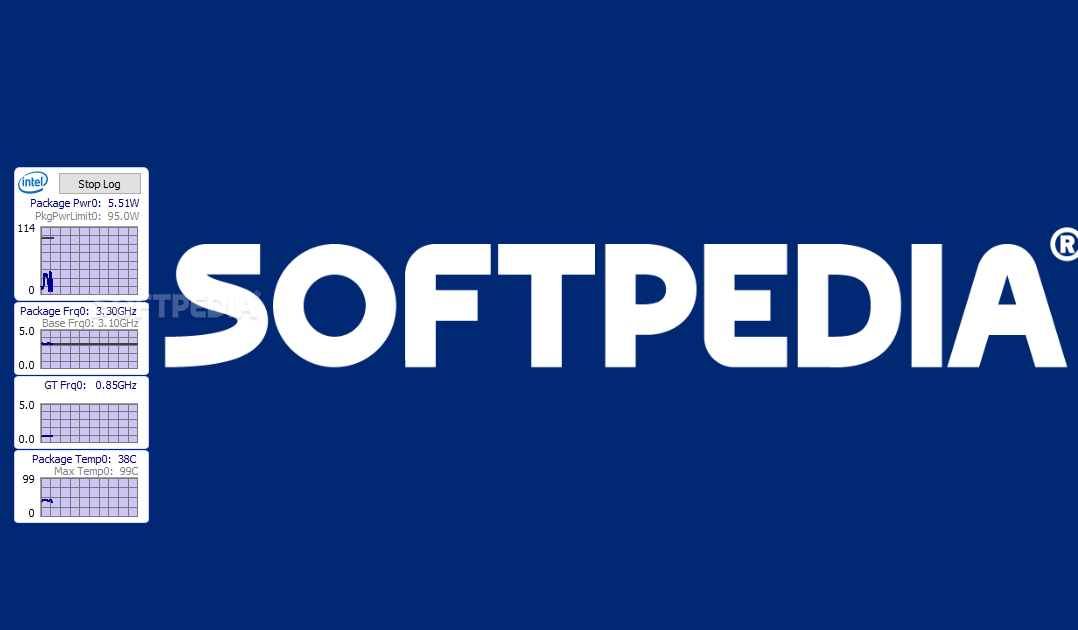
- #Intel power gadget reviews serial#
- #Intel power gadget reviews pro#
- #Intel power gadget reviews software#
- #Intel power gadget reviews windows#
In this case it seems that the task is single-threaded and pretty taxing for the one core that has to handle this.

#Intel power gadget reviews software#
All this can then be amplified by a bug in the software to run. Not only the machines are new, so is the OS Mojave. The i9 MacBook Pros were known to provide strange behaviour due to potentially high power consumption, temperature but not performance output, throttling. There are a few variables of unknown quality and quantity. Also because there might be a different solution to it other than changing the frequency manually, especially if this is impossible to do. I am not sure about what is happening here, which is the reason I give longer description of the problem.

Increasing the process' priority did not make a change. My suspicion is on OS, since CPU does not even reach to throttle and there is a clear process preference. I am absolutely sure the system could support higher CPU frequency during this, but it does not go for it. Mathematica task is long but does not change in nature, it multiplies big matrices over and over again just with different numbers.Īll of this is followed with fans running on higher than default speeds, because I increase them with the Control tool. It's like the OS does not allow higher CPU frequency for the "dangerous" thread, although the temperature can decrease eventually to <50C. Also the total core power increases, but only while this second process is running, as if the Mathematica process is forbidden to use CPU on higher clock. However, if I run another application on the side, the Intel Power Gadget can read higher core frequency (it shows just the average or the maximum, not per core/thread). After some more time (5-10 minutes) it will underclock for the second time, although the temperature is stable. The temperature reduces to ~60C, but until the end of computation this process never gets higher CPU nor Turbo Boost. The average temperature is probably 80C, but with Turbo Boost adjusting the clock, at some point temperature touches 100C and the CPU gets underclocked. At the start of computation the Turbo Boost is acting, the clock speed is higher and then after about a minute it abruptly reduces, simultaneously after the CPU temperature touches 100C. This might be Mathematica related, but so far I see no reason for underclocking so heavily.
#Intel power gadget reviews serial#
While running some specific calculations in Mathematica it happens that the CPU gets underclocked from 2.9G to 2.3G in serial and even to 1.5G during parallel computations.
#Intel power gadget reviews pro#
I use Intel Power Gadget and Macs Fan Control tools for monitoring the CPU and fans speeds on MacBook Pro 2018 with i9. Is this possible on new MacBooks and macOS ? We've measured the brightness of hundreds of laptop displays to date and have found the above Intel and Radeon settings to be culprits in lower brightness readings when not on AC power.I would like to have any direct control of CPU core clocks. In practice, it can be difficult to notice the brightness change with just the naked eye, but every little bit helps. Disabling VeriBright will lift this arbitrary limit.


A very similar AMD feature called VeriBright can be found on the Radeon settings menu which will automatically drop the maximum display brightness if running on batteries. Notebooks powered by AMD Radeon graphics are not exempt from this, either. The Spectre x360 15 2018, for example, can be as bright as 329 nits when connected to mains but only 282 nits when running on battery power with Display Power Saving Technology enabled. How much brighter will the display be when the above feature is disabled? It ranges from notebook to notebook with an average of about 15 percent. Disable the Display Power Saving Technology feature if it is enabled to allow the display backlight to operate at its maximum brightness level without needing to be connected to mains. Simply right-click on desktop, open the Intel Graphics Settings menu, and click on the Power icon as shown in the screenshots below. It's a catch-22 where many OEMs prefer to side with longer runtimes at the cost of display brightness without giving owners the option to choose beforehand.įortunately, this automatic setting can be easily disabled through the Intel HD/UHD Graphics Control Panel. While useful for increasing battery life, this may be unfavorable for those who like to use their laptops outdoors.
#Intel power gadget reviews windows#
Ultrabook displays tend to be brighter than 300 or 400 nits in order to minimize glare, but Windows laptops are also sometimes automatically set to lower the maximum brightness ceiling when running on batteries to reduce power consumption. If it's not the sun blazing directly onto the screen, then it's the inevitable glare from the overcast sky or surrounding objects. Anyone who has tried using his or her laptop or tablet outdoors will know that every nit of backlight brightness can help in making onscreen content easier to read.


 0 kommentar(er)
0 kommentar(er)
